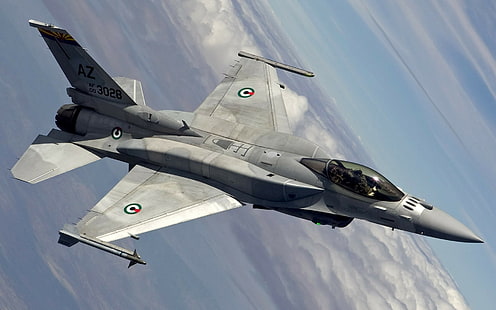
The United States Air Force is thinking of making a radical departure in its approach to fighter-jet development by focusing on a more modular, less costly, and smaller platform, away from big, costly long-lived programs like the Next Generation Air Dominance or NGAD fighter, as proposed by Chief of Staff of the Air Force General David Allvin.

General Allvin was speaking at the Global Air and Space Chiefs’ Conference in London, emphasizing the necessity for new developmental approaches. The future fighters should be built “built to adapt,” he said, focused on higher levels of modularity and open-system architectures that may make it easier to upgrade, including reduced sustainment costs over time.

That’s a different philosophy from the long-standing “built to last” norm that has dominated U.S. fighter design for decades.

The concept, akin to the Lightweight Fighter Program that spawned the F-16, is a new “light fighter” – intended to be quickly and easily modified to meet the evolving challenges of modern warfare. Allvin didn’t specifically mention the NGAD program, but his comments echo growing sentiments in the Air Force to put the high-cost, high-capability platform on strategic pause.

“Light fighter” sounds a lot like the success of the F-16, where the low-cost wingman was used to augment the much more expensive F-15 Eagle. One of the aspects in which the F-16 was a pioneer was its focus on energy–maneuverability theory and its use of fly-by-wire controls so could fly far better than even its weight class with a fraction of the cost.

It made it possible for the U.S. The Air Force is to adopt a “high/low mix” of fighters, a strategy that has evolved in practice so that both F-15 and F-16 are considered “low” end fighters, while the F-22 and F-35 assume the “high” end roles.

General Allvin contended that the existing strategy regarding fighter design- lengthy development timeframe as well as high-cost procurements based on an assumption that these fighters would continue to be relevant for several decades. Allvin feels that it does not hold anymore given how many foreign nations are now fielding stealth fighters and emerging technologies such as artificial intelligence to enhance air defense systems. “That proposition can become an albatross. It’s still functioning but it’s not as effective,” he said.

Instead of the tedious cycles of the F-22 and F-35, he advised adopting open system software architecture and highly modular designs. This would allow for the quick replacement or upgrading of older models with newer designs sharing common systems.

The concept, as it happens, draws inspiration from similarly forward-thinking fighter designs of the 1950s-the Century Series. Much like Air Force acquisition chief Will Roper’s own “Digital Century Series” notion floated in 2019.

The Century Series was conceived to achieve technological advancement at speed through modular avionics systems and other onboard equipment that could be reused in subsequent aircraft designs. Roper’s “Digital Century Series” would take this much further via digital engineering and virtual testing environments to mature the fighter design and subsystems quickly.

General Allvin also supported Roper’s presentation, saying: “Built to last’ is a tremendous 20th-century bumper sticker, and the assumption then was, that whatever you had was relevant as long as it lasts. I’m not sure that’s true anymore.”

That resonated with then-Air Force Chief of Staff General Charles “CQ” Brown in 2021 as he appealed to shift toward a “5th generation minus” fighter design based on modular systems from the F-22 and F-35 but in cheaper aircraft with briefer service lives.

Thus, shortening the intended service lives of fighters might also revive America’s fighter industry, shaving the most expensive part of any modern fighter program — long-term sustainment.

Only three big American firms remain in the fighter business: Lockheed Martin, Northrop Grumman, and Boeing. With Lockheed Martin securing contracts for the F-22 and F-35, it’s been more than four decades since the US deployed a new clean-sheet fighter design from any firm other than Lockheed’s Skunk Works.

A shift toward fighters with shorter service lives would permit the development of the next fighter to begin nearly as soon as the current one is delivered. A similar advantage could be realized by using open system software architecture, in which each company’s components and systems would integrate, and smaller companies could submit their modular designs using the same open framework.